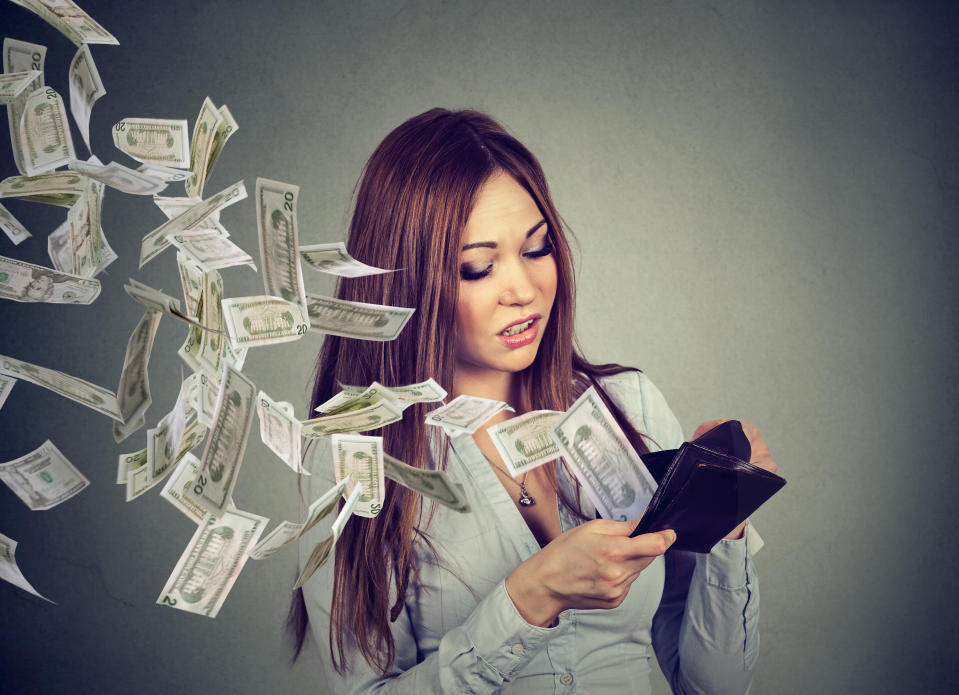What is the decoy effect and why does it make us spend more?

If you’ve ever reached the end of the month and wondered where all your money has gone, you aren’t alone.
Many of us overspend from time to time, particularly when it comes to small, day-to-day items such as takeaway coffees.
Sometimes, overspending isn’t always within our control, though, particularly when marketing ploys play a part. Without realising, many of us have been falling for the “decoy effect” - which can have a direct impact on our finances.
What is the decoy effect?
If you’ve ever had to decide between purchasing three items - for example, different sizes of coffee in a cafe - and opted for the middle-priced item, then you have experienced the decoy effect.
It is a type of cognitive bias whereby consumers change their preference between two options when presented with a third - the “decoy”. The phenomenon is also referred to as the “attraction effect” or the “asymmetric dominance effect”.
Essentially, the third option is priced to make one of the other options far more attractive to a consumer. It is “dominated” in terms of perceived value - such as size or quality - and its purpose is to sway the consumers towards a more profitable option.
Behavioral economist Dan Ariely, the author of Predictably Irrational, described how The Economist used the decoy effect to encourage readers to choose a more expensive option when subscribing.
READ MORE: Five easy ways to cut down your day-to-day spending
Ariely asked 100 of his students to choose between two offers: a digital-only subscription for $59, or a print-only subscription for $125. The results showed 68% of the students chose the digital option, the cheaper option.
He then introduced a third option - a digital and print package, for the same price as the print-only option, $125. When given the choice of three options, 84% of his students chose the print and digital package. In this second scenario, the print-only option had become the decoy because it offers less than the digital and print package.
The decoy effect can also be seen in coffee shops. Many cafes offer customers three different sizes: small, medium and large. Often, we choose the middle option because it is not the most expensive. However, it is still more expensive than the small, and therefore more profitable to the company.
If we had a choice between small and large, however, it’s likely we would choose the small because it appears to be more reasonable.
In the coffee shop scenario, we are more likely to choose the middle-priced item when a third, more expensive option is added. Therefore, the decoy effect makes us spend more than we intend to by giving us a third “asymmetrically dominated option”.
READ MORE: Five ways to be less wasteful with food and save money
We have been falling for the decoy effect for decades. Research explaining the phenomenon was first published by academics Joel Huber, John Payne and Christopher Puto in 1982, in the Journal of Consumer Research.
To demonstrate the decoy effect, 153 university students were asked to make choices from among six product categories: cars, restaurants, beers, lotteries, film and TV sets. Decisions involved either two or three alternatives, each designed to represent a target, a competitor, and a decoy - to nudge the students towards selecting the “target”, often the more profitable option. In every case except the lottery tickets the decoy successfully increased the probability of the target being chosen.
So what can you do to avoid being swindled by the decoy effect? Firstly, research has suggested that not everyone is susceptible to this cognitive bias. According to the researchers Wen Mao and Harmen Oppewal, who studied the choices of more than 600 members of a national online consumer panel, the decoy effect is more pronounced for consumers who rely heavily on intuitive reasoning in judgment and decision-making.
Being aware of your spending - and of any persuasion on the part of the company selling the item - is also key. When working out which item to purchase, it’s important to think about whether you really need it, as well as if you are getting a good deal. If the smallest, cheapest option would suit you - such as a small coffee - then go for it.
Essentially, avoiding the decoy effect is about weighing up whether you are getting the best offer, or if you are simply spending money you would rather keep in your bank account.

 Yahoo Finance
Yahoo Finance 